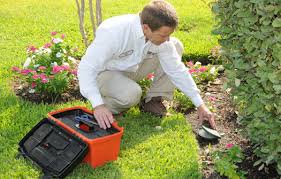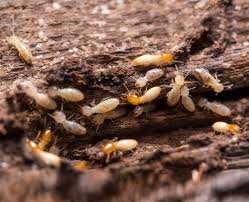Getting The Adelaide Termite & Pest Control To Work
Repellent compounds, such as Bifenthrin, are commonly used as barriers. Non-repellent termiticides, for example Imidacloprid and Fipronil, may be resilient where coverage is uncertain (for example, where the chemical is injected through concrete).
Soil may also be treated using a chemical barrier before building construction. Bifenthrin is commonly employed for this function; Imidacloprid is often used for the perimeter of a new arrangement.
This technique isolates the termite colony from a building by creating an entire barrier around or beneath a buildings foundations that termites cannot cross.
Crushed granite of a shape and size. Termites cannot get into a building if granite particles are too big and heavy for them to move. Granite aggregate is commonly applied around pipes and behind the lower bricks of a building parameter which has a concrete slab foundation.
The Facts About All State Termite & Pest Control Adelaide Uncovered
Marine-grade stainless steel mesh can be glued to concrete slab foundations, masonry and around pipes through slabs. Termites cannot enter through the mesh openings.
Strip shielding, such as alloy ant caps on the tops of stumps under suspended timber floors, can help prevent termite attack. If installed correctly, termites need to construct an easily visible mud tube within the cap to penetrate the building.
Chemically impregnated sheets that have a repellent termiticide in plastic picture or geotextile cloth held between two polymer films. The dose is determined by the anticipated life of the building. Current examples use either deltamethrin or bifenthrin repellents.
Risk of termite attack to timbers may be decreased by controlling moisture, using resistant timbers (see below) beneath floor level, avoiding contact between timber and ground or using non-timber elements in construction (by way of instance, concrete masonry and steel). But it's notable that study in the Australian Commonwealth Scientific and Industrial Research Organisation (CSIRO) has shown that rates of termite attack are not related to building frame type; steel-framed houses are also attacked because termites find other food resources inside. .
Certain species of wood, such as Red gum and White cypress pine, are naturally resistant to termite attack. However, all timber cut out of a resistant species will not be just resistant. Accordingly, these timbers could possibly be utilised in ground contact or to get sub-floor framing, but strip shielding or alike should still be used to prevent termites reaching the construction above. .
Getting My Adelaide Termite & Pest Control To Work
Re-growth timbers of resistant species tend to be less resistant than old-growth timbers and plantation-grown timbers.


Termites need food (wood) and water maintain the warmth within their nests high, and so, their colony alive. Homeowners can help prevent termite attack by removing these needs.
The department would like to acknowledge the assistance and advice of Don Ewart in the production of the information.
The Ultimate Guide To Rentokill Termite & Pest Control Adelaide
Subterranean termite problems continue to be treated with liquid chemicals, because other alternative methods have not attained mainstream adoption. In order to understand termite treatment better, its useful to understand the main procedures employed. Generally speaking, there are two main sorts of termite treatment approaches (that employ termite chemicals): conventional treatment and perimeter treatment. .
In order to understand how effective each type of treatment is, it's first necessary to understand how both work. Also, bear in mind that termite liquid chemicals fall into two kinds Repellent and Non Repellent, and also the methods below are only for subterranean termite problems (the vast majority of instances ).
Conventional treatments are only effective for subterranean termites, and have been used for more than fifty decades now. They involve liquid treatments applied into the soil region around a home (often via drilling) the dirt under plumbing systems in the slab, bath cubes, all surfaces of foundation walls, the interior of foundation based cinder blocks, and so forth, all which are common access points for subterranean termites. .
Conventional treatment approaches typically require drilling in order to achieve deep into the ground, targeting the interior of foundation walls, plumbing regions, and the interior of cinder blocks, such as. The whole amount of treatment stains and the amount of drilling needed will vary depending on the kind of construction of the home.
Adelaide Termite & Pest Control Things To Know Before You Buy
Perimeter treatments mainly only use certain types of non-repellent check out here termiticides that are liquid. You dont want to repel termites when they are already found within your assumptions. This treatment is designed to target termite infestations by treating the dirt that's in closest proximity to the foundation walls on the outside of the home, which are often the entry points for subterranean termites.